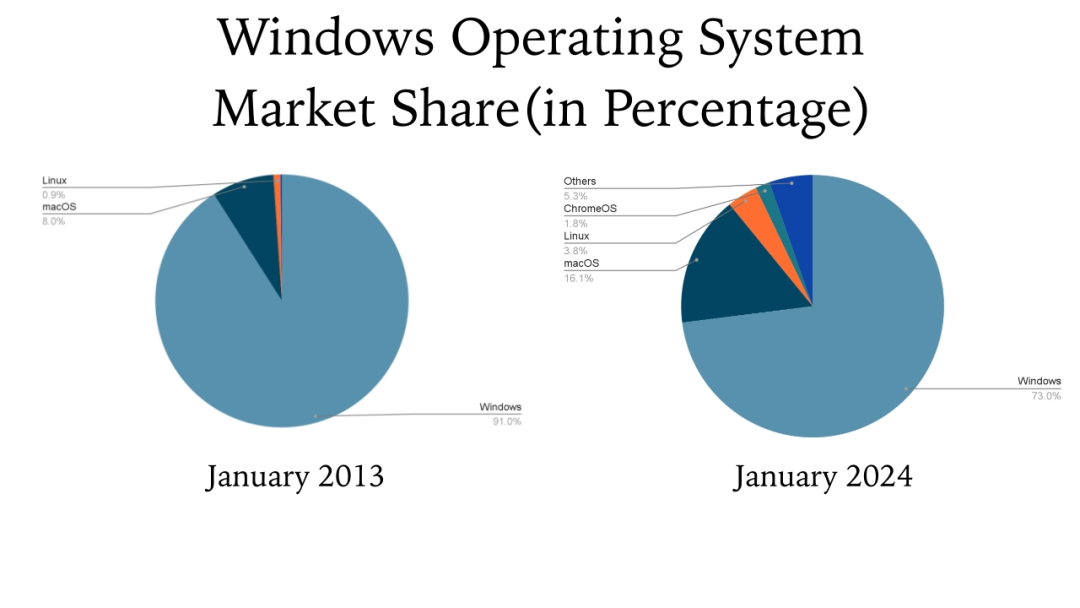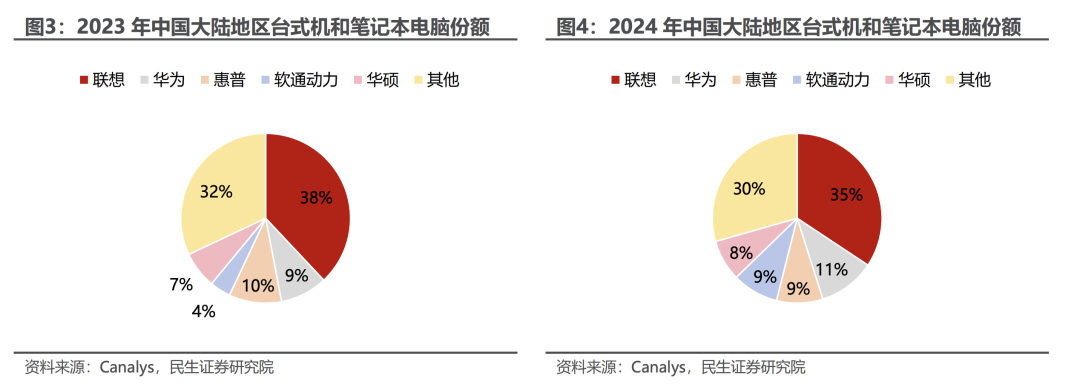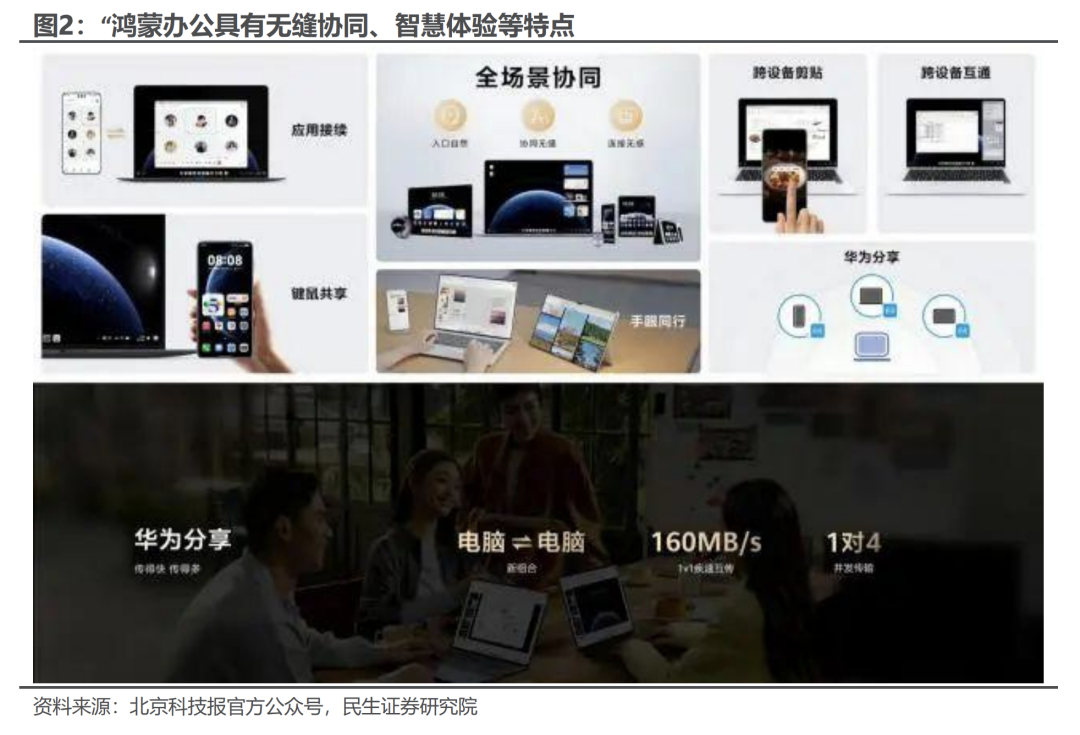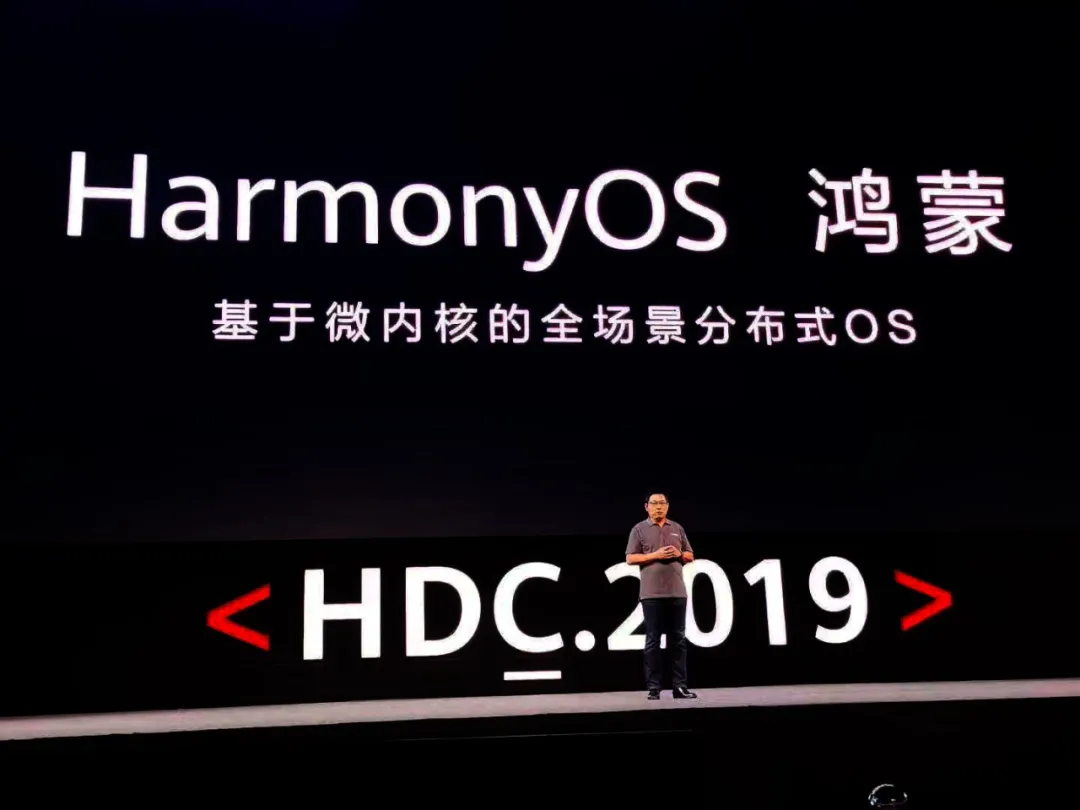

On May 19, Huawei launched two new laptops: MateBook Pro and MateBook Fold Extraordinary Master.
Typically, a laptop launch event should focus on hardware specifications such as processors, screens, and battery life. However, this time, the most attention was drawn not to the hardware but to the HarmonyOS system installed on the computers.
It may seem like an ordinary product launch, but the significance behind it is far greater.
It represents that China finally possesses a truly autonomous and controllable PC operating system, from the kernel to the user interface, from system logic to user experience.
What does HarmonyOS mean for domestic substitution? Today, we will explain it in simple terms.

What does the release of HarmonyOS computers signify?
Some may ask: Why must we develop our own operating system? Aren’t Android, Windows, and macOS all quite usable?
This is actually not simple at all.
Using someone else’s operating system is like living in a rental house; you work hard to renovate it, and when it’s finally done, you realize the house belongs to the landlord. What if one day they don’t let you live there anymore?
The operating system is like the property deed of a house. Once the core technology is in someone else’s hands, we will always be in a passive position.
For years, the computer systems we have used have relied almost entirely on foreign technology.Windows is the absolute mainstream, macOS is exquisite and smooth but more closed.

For over a decade, challenges to Windows have never ceased.
Ultimately, while we have always been able to use it, we have also always been “renting“ someone else’s house.
The release of HarmonyOS computers has finally changed this situation. Although it started late and the process was difficult, taking this step is of great significance.
Moreover, the development of HarmonyOS was not a spur-of-the-moment decision, nor was it a temporary idea. As early as 2015, Huawei initiated the Harmony project. It is not a “modified Linux, nor is it a “rebranded product, but rather a self-developed system starting from the kernel.
This point is crucial.
According to Huawei’s official introduction, HarmonyOS adopts a completely self-developed microkernel architecture, which is different from Windows and macOS. Compared to traditional monolithic kernel designs, microkernels are lighter, more modular, and offer greater security and scalability.
To reconstruct from the ground up, Huawei has invested thousands of R&D personnel and hundreds of millions in funding. As of now, HarmonyOS has applied for over 2700 core patents.
At the launch event on May 19, Huawei’s Executive Director and Head of the Terminal BG, Yu Chengdong, emphasized:
“Only by mastering the core capabilities of the operating system can we truly achieve an autonomous, secure, and controllable software ecosystem.”
This means that HarmonyOS finally allows us to hold the information foundation of the digital age in our own hands.
So, returning to the initial question, why can’t we always use other operating systems? They are indeed quite usable.
But the problem is — how long can we rely on them?
Currently, over 80% of smart devices globally use the Android system, and the same goes for the domestic market. However, this system ultimately belongs to Google.
In recent years, rumors have increased that Android is “no longer fully open-source.” If this becomes true, domestic manufacturers could directly fall into a system crisis.
And what about Apple? It goes without saying. Closed, monopolistic, and high commissions, the “Apple tax” can be as high as 30%, leaving developers with no voice.
The Windows blue screen incident in July last year caused widespread paralysis of office systems across the country and even globally, illustrating how terrible the consequences can be when the operating system is not in our control.

This is because using someone else’s system is always on someone else’s territory. If the other party cuts off data supply or stops services, we won’t even have the right to choose.
Therefore, it is not that we want to start from scratch, but that we cannot be without our own system.
The release of HarmonyOS computers is a breakthrough for the autonomy of Chinese operating systems.
It is not just an additional option but a reduction of risk; it is not a spur-of-the-moment decision but a long-term strategy, giving us a more stable trump card.
And this is the true significance of HarmonyOS.

What makes HarmonyOS so impressive?
Many people instinctively regard HarmonyOS as a competitor to Android, Windows, and macOS, thinking it is here to seize market share.
However, the goal of HarmonyOS has never been to replace them but to achieve a true dimensionality reduction attack, paving a different path.
Android, Windows, and macOS are all powerful systems, but their underlying logic is designed around single devices.
Phones are phones, and computers are computers, each running independently without interference.
These devices are like neighbors living in the same building; although they are close, they lead separate lives and rarely communicate.
Although data transfer between multiple devices has become more efficient in recent years, the barriers between devices remain difficult to break down.

The adaptation range of different networks is completely different, and systems based on 4G are difficult to adapt to various application scenarios in the 5G era.
For example, a few years ago, there was a saying about Apple: once you buy an Apple phone, it is easy to gradually match it with a Mac, iPad, and Apple Watch to create an “Apple ecosystem.”
This statement, while humorous, highlights a problem: Apple devices do indeed collaborate smoothly, but this smoothness only works within Apple’s ecosystem. Once you step outside the “Apple circle,” the experience significantly diminishes.
If you use an Apple computer to transfer files to an Apple phone, you can simply open “AirDrop,” or upload to iCloud cloud storage, and it can be done in seconds.
But if you want to design and create images on an Apple computer and then upload the images to an Android phone, you have to:
First, log into third-party software on the computer;
Then open the file transfer assistant to send the images to the phone;
Log into third-party software on the phone to receive the files…
After going through this entire process, it is hard to say it is not annoying.
Some may say, isn’t it just a bit troublesome? As long as it works, it’s fine.
Indeed, functionally, these operating systems are also “usable,” but in terms of experience, they are not user-friendly.
It is these small details that expose a problem — the original operating systems can no longer keep up with the future trend of “multi-device collaboration.”
Especially in the era of 5G, AI, and even the future 6G era, devices will only become more numerous and smarter: phones, computers, cars, home appliances, wearable devices… In the current and future context of tightly connected data between devices, Android, macOS, and Windows, which are based on single-device development, will only fall further behind.
The architectural approach of HarmonyOS has been different from the very beginning.
It is not designed to serve a specific type of device but aims to create a “Tower of Babel” for the digital age, establishing a software and hardware collaborative network that connects all devices.
Imagine these scenarios:
You start a PPT on a Huawei tablet and can seamlessly continue editing it on a HarmonyOS computer;
You generate an AI video on a Huawei phone and can directly cast it to a smart TV;
Home devices like TVs, refrigerators, even smart speakers, and intelligent driving systems can connect to the HarmonyOS, allowing not only data sharing but also synchronized operations and global responses.

This is HarmonyOS’s “multi-device collaboration.” It never treats devices as isolated islands but sees them as a legion, coordinating uniformly and collaborating efficiently.
The capability behind this relies on HarmonyOS’s unique architectural design.
Huawei has developed a system logic of “one development, multi-device deployment.” What does this mean? It means developers only need to write one set of code that can run simultaneously on various devices such as phones, computers, tablets, TVs, and car systems.
The long-standing issue of multi-device adaptation that has troubled developers has been effortlessly resolved with HarmonyOS.
At the kernel level, HarmonyOS uses a “microkernel,” which is a lighter, more secure, and more modular underlying architecture.

We believed back then that HarmonyOS’s microkernel/full-scenario/distributed concept was impressive.
In simple terms, Android, Windows, or macOS systems are like a brain controlling all modules; HarmonyOS is a central coordinator where each module operates independently, concentrating what needs to be centralized and separating what needs to be divided, ensuring both stability and flexibility, making it more suitable for the explosive growth of future devices.
To summarize:
Other systems address current device interoperability, while HarmonyOS focuses on future multi-device collaboration.
While others are still pondering how to reduce barriers between devices, HarmonyOS is already building the foundation for the next digital age.

How important is HarmonyOS computers for domestic substitution?
At this point, many may still ask: “Regardless of how grand the vision is, the Harmony ecosystem is indeed lacking. How many software can run on a computer with HarmonyOS installed?””
This kind of doubt is not surprising. After all, we have long been accustomed to measuring the value of an operating system by the richness of its ecosystem.
In this coordinate system, HarmonyOS appears too new and too “empty.”
But the question is, is HarmonyOS really meant to compete with Android and Windows in terms of how many software can be installed? Clearly not.
If you view HarmonyOS through the lens of today’s operating system standards, you not only miss the point but also underestimate its ambition.
HarmonyOS is truly betting on the entire digital world of the future, the “starry sea.”
Its goal has never been to carve out a territory in the existing operating system market but to do something more visionary: to become a pioneer of the new era.
The advantages of HarmonyOS’s “multi-device collaboration” have been discussed earlier, so I won’t repeat them here. What I want to emphasize is that even without discussing multi-device collaboration or the system’s advancement, from the perspective of “domestic substitution,” HarmonyOS has undeniable value.
We often see that some technologies develop rapidly, but the infrastructure evolves slowly. The reason is simple: some things may appear to be domestically produced, but the core is still in someone else’s hands.
The operating system is a typical example. You can use it without issues, and it runs smoothly. But if the underlying control is in someone else’s hands, as long as they don’t allow you to use it, the system could stop functioning in an instant.
The emergence of HarmonyOS computers is set against this backdrop. It signifies that we finally possess “digital sovereignty” on the PC front. Not only can we use it, but we can also use it with peace of mind.
Does it sound too abstract? Let’s use a metaphor. What HarmonyOS is doing now is like building roads for the digital age.
It won’t, and cannot, immediately pave the road with skyscrapers; instead, it will lay a solid foundation, installing cables, pipelines, and tracks.
These tasks may seem slow and even thankless, but they are the prerequisites for all future construction.
Think back to the early years of China’s high-speed rail construction; many people questioned:“Why spend so much money building roads in desolate areas? What’s the use?”
But once the high-speed rail was operational, logistics became faster, industries thrived, and all doubts naturally disappeared.
The “new infrastructure” of the digital age essentially follows the same logic.
So, if you say that HarmonyOS’s ecosystem is not mature enough and that the number of apps is too few? Indeed.
But don’t forget, when Android, which currently holds the first-mover advantage, first came out, not many people were optimistic about it.
Early Android phones could do very little; besides making calls, they could only play Tetris and Snake. And when WeChat launched, who could have imagined that it would become a universal digital life portal decades later?
Important infrastructure has never been built overnight.
What HarmonyOS is doing now is the most challenging yet fundamental task: laying a solid foundation for the digital age. It has not chosen the easy path but has taken the most difficult route, which is also the most likely to lead to the future.
Currently, the number of devices in the Harmony ecosystem has reached 800 million. While this may not seem as impressive as Android’s 3 billion, the key lies not in quantity but in distribution.
Many of these 800 million devices are not traditional phones or computers but emerging smart terminals like IoT devices, smart homes, and industrial equipment. These battlefields are precisely where the next generation of operating systems will compete.
According to GSMA Intelligence’s forecast, by 2025, the number of global IoT connections will triple, with 25 billion IoT devices expected to connect to the network.

Key data: 5 billion mobile internet users, 24.6 billion IoT devices
This number far exceeds the total number of connected devices during the mobile internet era, and HarmonyOS is targeting this explosive growth market.
What it aims to do is not to “recreate Android” but to build a unified underlying system language that allows all smart devices to operate on a single network and collaborate under one logic.
What it seeks to connect is not just a phone or a computer, but the entire digital continent of the intelligent era.
So, the question arises: how does this relate to ordinary people?
Of course, it does, and the relationship is significant.
If the operating systems of the phones, computers, TVs, and car systems you use every day are not autonomous and controllable, if something goes wrong, the first to be affected will be you.
In this sense, domestic substitution is not just a catchy slogan but an inevitable trend. We must ensure that critical digital infrastructure is firmly in our own hands. No longer relying on roads built by others, we need not worry about being suddenly cut off.
HarmonyOS has already come a long way on this road.In 2024, research firm Counterpoint Research pointed out that HarmonyOS’s market share in China has increased from 8% to 17%, while iOS’s market share has decreased from 20% to 16%.
On the other hand, from the perspective of application ecology, HarmonyOS is steadily expanding.
According to Huawei’s public data, over 1000 applications have completed adaptation for HarmonyOS computers, and this number is expected to exceed 2000 by the end of the year, covering mainstream scenarios such as office work, design, entertainment, and audio-visual.
WPS, Jianying, iQIYI, NetEase Youdao… familiar software has gradually joined the HarmonyOS camp.
You might think that software is adapting to HarmonyOS, but in fact, the entire digital industry is regrouping and recreating its ecosystem.
HarmonyOS is not an operating system designed for the past; it is a product truly born for the future.
Even if it moves a bit slower now, that’s okay. What matters is that this road is stable, deep, and far-reaching.

Conclusion
The arrival of HarmonyOS computers marks another milestone in China’s information technology moving towards autonomy and control.
What it represents is not just a single operating system but a microcosm of the entire upgrade of the domestic technology ecosystem.
HarmonyOS, which has just embarked on its journey, still faces many controversies. But once, Android and iOS also grew amidst controversies.
In the future, there will come a day when computers, phones, TVs, cars, and home appliances will all use the same system and speak the same universal language.
This is the starry sea that HarmonyOS aims for.
So, let’s give it a little more time, and give ourselves a bit more confidence in our choices.
References:
1.Huawei Official Website
2.2025-2030 China IoT Industry Competition Pattern and Investment Prospect Forecast Report, Sihan Industry Research Institute
3.Surpassing iOS, Huawei’s Territory Accelerates Expansion! China Business News
4.HarmonyOS Breaks Barriers, Tackling the Most Difficult Challenges, The Paper Commentary
5.Pure HarmonyOS, Recreating an Operating System Era,36Kr
 ····· End ·····Star Sea Intelligence Bureau System ResearchFocusing on the Rise of Chinese Manufacturing and Domestic SubstitutionStories of China’s Industrial Rise▲Follow Industry News, Crack Technology CodesChasing Advanced Technology Trends, Witnessing the Starry Sea of Chinese Manufacturing
····· End ·····Star Sea Intelligence Bureau System ResearchFocusing on the Rise of Chinese Manufacturing and Domestic SubstitutionStories of China’s Industrial Rise▲Follow Industry News, Crack Technology CodesChasing Advanced Technology Trends, Witnessing the Starry Sea of Chinese Manufacturing